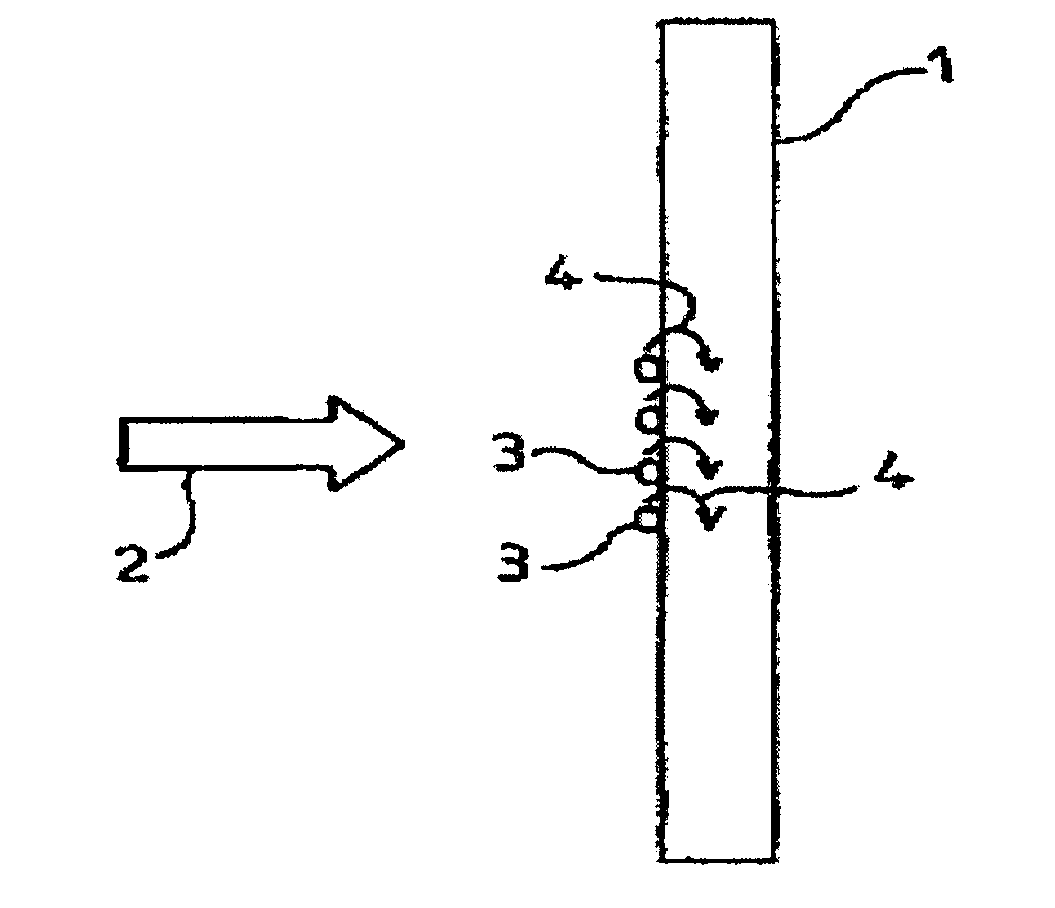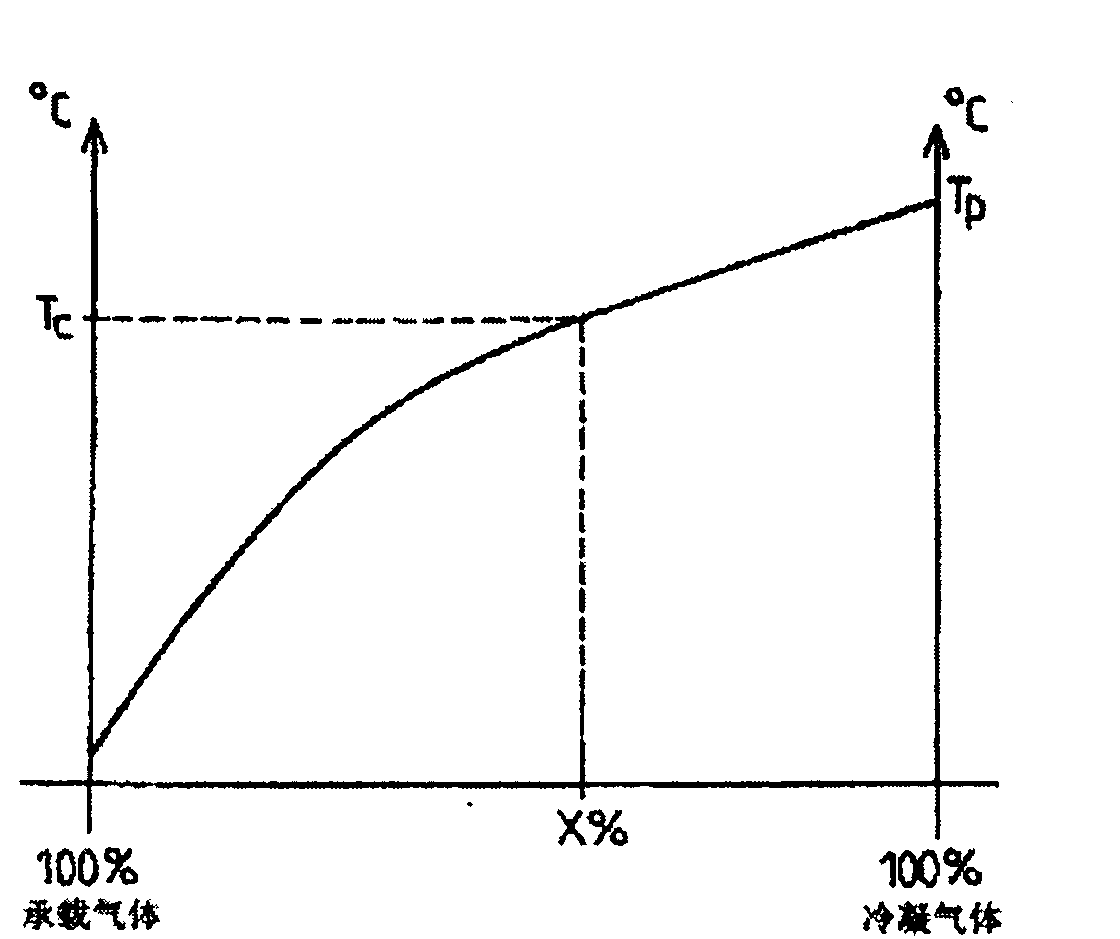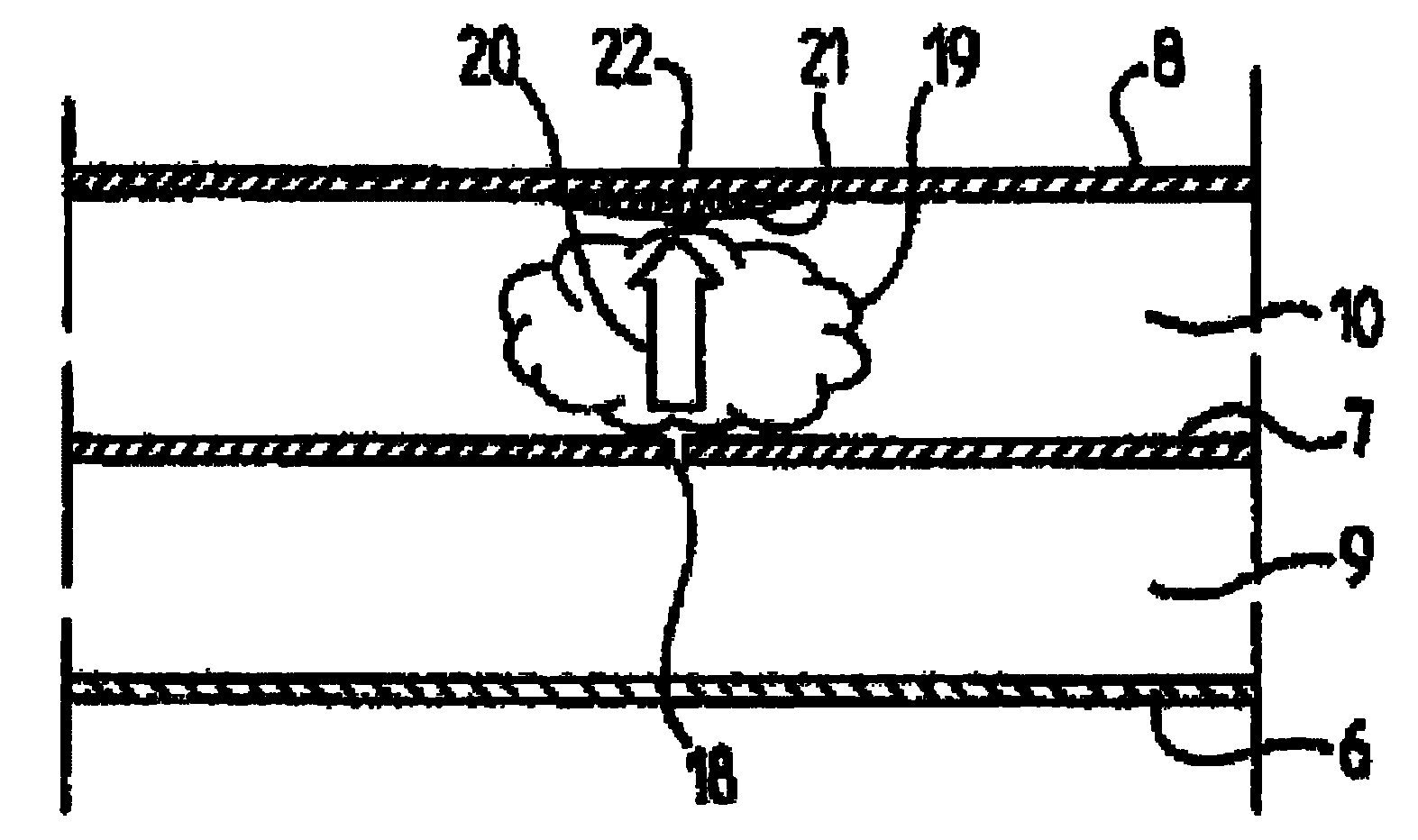Multi-membrane reservoir sealing test
A leak detection and cabin technology, applied in container discharge methods, fluid tightness testing, container filling methods, etc., can solve problems such as difficult to find optical camera thermometers
- Summary
- Abstract
- Description
- Claims
- Application Information
AI Technical Summary
Problems solved by technology
Method used
Image
Examples
Embodiment Construction
[0039] figure 1 Bulkhead 1 is depicted and the mean temperature of the bulkhead is TM. At pressure P the gas comes into contact with the bulkhead 1 as indicated by arrow 2 . If the condensation temperature TC of the gas is higher than the temperature TM, the gas will condense in the form of liquid or solid precipitate 3 . According to this mode, the gas condenses and releases latent heat which is transferred to the bulkhead 1 . This thermal energy transfer is indicated by arrow 4, therefore, the local temperature T of the bulkhead 1 will be higher than TM. When the temperature TM, pressure P and the nature of the gas are controllable, the condensation at this time is called forced condensation.
[0040] Such gases may be:
[0041] A single gas whose inherent physical properties correspond to the ideal condensation temperature.
[0042] A mixture of noncondensable and condensable gases whose concentration can be adjusted to suit the condensation temperature. Specifically,...
PUM
| Property | Measurement | Unit |
|---|---|---|
| Average temperature | aaaaa | aaaaa |
Abstract
Description
Claims
Application Information
 Login to View More
Login to View More - R&D
- Intellectual Property
- Life Sciences
- Materials
- Tech Scout
- Unparalleled Data Quality
- Higher Quality Content
- 60% Fewer Hallucinations
Browse by: Latest US Patents, China's latest patents, Technical Efficacy Thesaurus, Application Domain, Technology Topic, Popular Technical Reports.
© 2025 PatSnap. All rights reserved.Legal|Privacy policy|Modern Slavery Act Transparency Statement|Sitemap|About US| Contact US: help@patsnap.com



